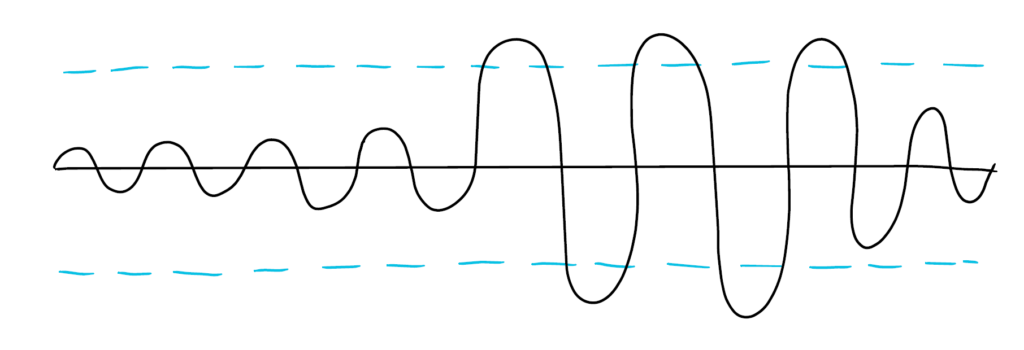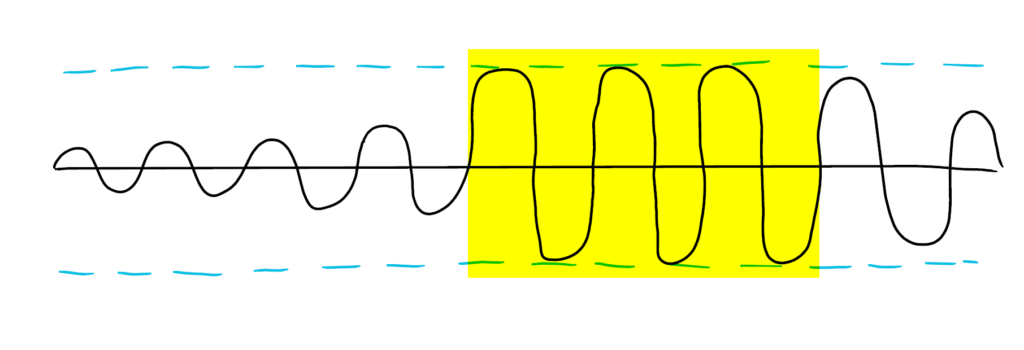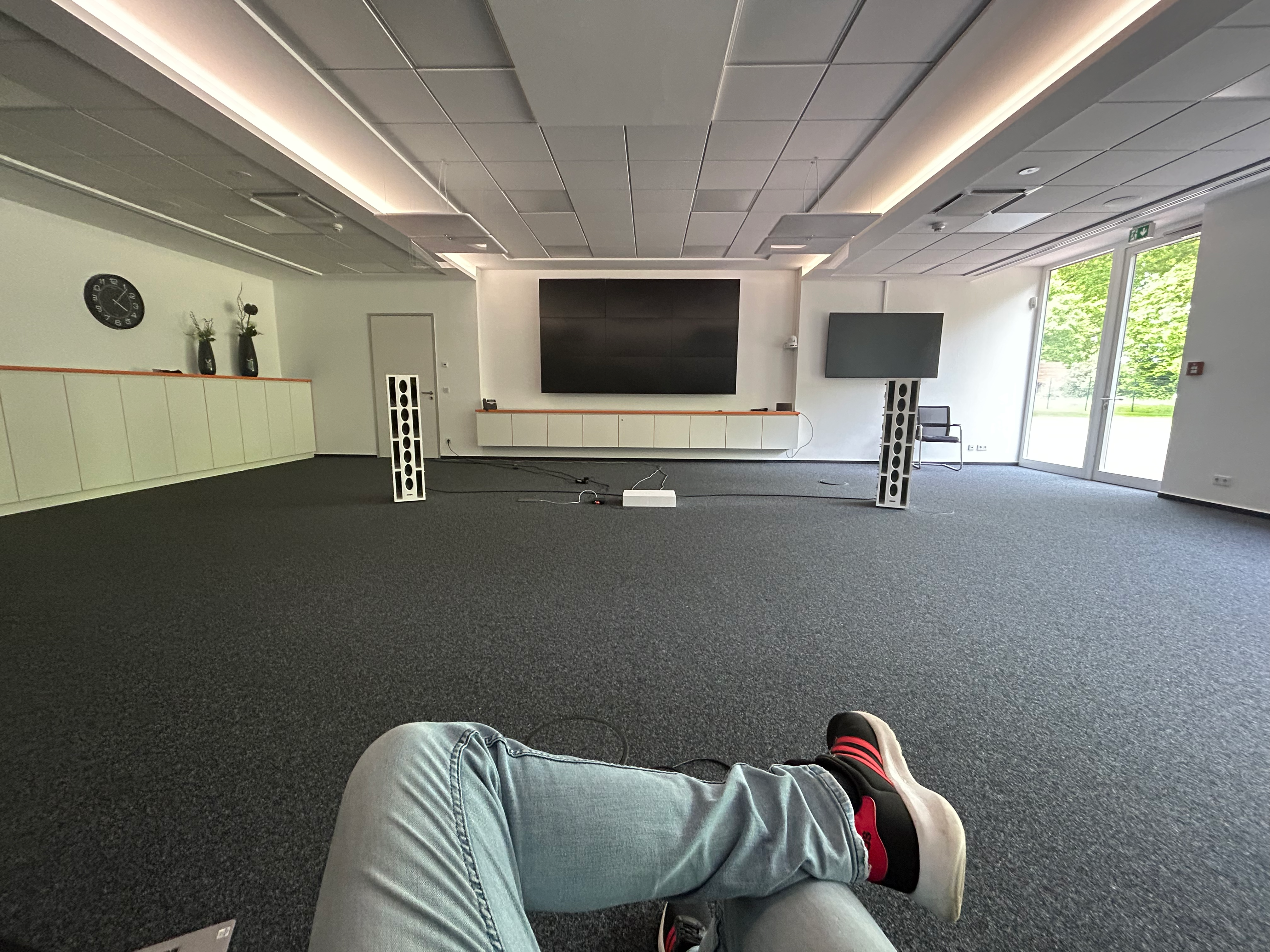How-To: Choose your limiter
Actually, our limiter should take care of two different problems as described in my previous post. It would have to catch short peaks immediately, but it would also have to monitor over a long period of time how much current has flowed on average over time and make slow and long term level corrections accordingly. Therefore, we need to choose the right limiter.
Limiters are not all the same. To know what kind of hardware is used for your limiter, you should look in the device specifications.
Different types of limiters
Let’s take a look at our signal again to understand different limiter hardware.

In my case, my controller can set a limiter that uses RMS detection for limiter setting. This provides a smooth clipping of the signal, resulting in more musical and natural limiting. It prevents the system from becoming dull and lacking punch when engaged. The wave signal is not hard clipped, but rounded off to a certain degree.

Cheaper controllers and crossovers work with hard clipping instead, which is sufficient for a peak limiter, but lacks a lot of sound quality when used as an RMS limiter. The sound will be similar to that of a clipping amplifier.

Attack and Release
In addition, there are even more complicated solutions where you can define attack and release times for gain reduction. In this case, we are talking about a compressor rather than a limiter, though.
📝 Note: Attack is the time it takes the compressor to complete the gain reduction as a function of the compression ratio. Release is the time it takes the compressor to raise the gain to the input level once it determines that the input gain no longer needs to be compressed.
To keep this tutorial lean and simple, we will focus on limiting rather than compressing.
Make the right choice
Unfortunately, my controller can only set one limiter, so I have to choose. What this means in my case is this: If I decide to use a peak limiter, I have to keep in mind that the limiter is soft clipping. So I would have to set its threshold a bit lower than calculated, but achieve the desired effect. If I choose the RMS limiter, I can be sure that the signal quality will be preserved to a certain degree and also achieve the desired effect. In both cases, I would be restricted to one type of limiter, and I can protect my system from either mechanical or thermal damage, but not both.
A reasonable compromise in this case may be to limit the power to twice the RMS power. This way, most speakers reach only half of the allowed peak power (better safe than sorry), but also the RMS power is practically never exceeded. But why is that?
Simple: we do not hear static sine waves with an overall equal waveform. In the case of the sine wave, we have a static signal that – at the right volume – is equal to the RMS power of our speaker and, as mentioned earlier, may grill it after some time. With music, on the other hand, there are loud, bouncing drum parts, various voices, sometimes whispers, maybe even a brief silence, resulting in a very dynamic signal. The waveform of the signal varies a lot in this case.
Excerpt: The crest factor
Your limiter decision could also be based on the crest factor of the desired use.
📝 Note: The crest factor describes the discrepancy between the peak and RMS values of a signal in decibels (dB). The more dynamic an audio signal is, the higher this value will be.
| Sine wave | 3dB |
| Average music | > 6dB |
| Live music | > 18dB |
For example, if you are planning your system for a rave where recorded music is played with a lot of constant and long sub-bass, your crest factor might be below average and you should consider an RMS limiter. Also, at a rave there are no microphones that could be dropped to create a blasting peak. 😉 With live music, the dynamics are so high that limiting to the peak value of the speaker would actually make sense.
Conclusion
Choosing your limiter is not an easy task and is highly dependent on your individual intended use of the PA. Take your time and try out different variants.
Have you already decided on a limiter? Great! In the next article I’ll show you how to calculate its threshold values. See you there!





1 thought on “How-To: Choose your limiter”